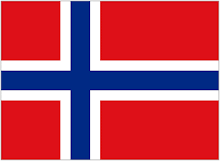"While dictators rage and statesmen talk, all Europe dances — to The Lambeth Walk."
Tuesday, 5 May 2009
Statue of Sir Keith Park Deemed 'Too Traditional' for Trafalgar Square
Trafalgar Square's fourth plinth has been empty since it was constructed in 1841.
In the mid-90s, someone came up with the bright idea of using it to showcase contemporary art, and some pretty hideous concoctions ensued; there was a statue of a pregnant, naked disabled woman, a plastic cast of the plinth placed on top in a kind of mirror image, and a strange model of a tree with its roots wrapped around the plinth.
The next bright idea has seen members of the public apply for the privilege of waiting in a queue and taking it in turns to stand on the plinth for an hour in the pose of their choice.
Is this nonsense really becoming of Trafalgar Square, built to commemorate one of Britain's greatest naval victories?
Not really.
But planning officials at Westminster Council disagree. They claim that the 'provocative art' is actually the highlight of the square, and the rest is quite boring. They said as much when they turned down a proposal to place a statue of Air Chief Marshal Sir Keith Park, head of Fighter Command over South East England and London during the Second World War, on the fourth plinth, saying it was 'too traditional' and would 'clash' with the other rubbish they already have planned.
New Zealander Sir Keith is the man whose strategic genius is credited with winning the Battle of Britain. The vanquished Germans called him 'the defender of London'.
It seems even helping to defeat Hitler doesn't buy you much favour with the trendies these days.
Sir Keith is exactly the sort of man who should be standing in Trafalgar Square. He was an air ace in the First World War, but also fought as an ordinary combat soldier. Here is a brief run down of his extraordinary life and service to this country:
Sir Keith, a New Zealander, fought in the First World War as an artillery man at Gallipoli and the Somme.
On 21 October 1916, Park was blown off his horse by a German shell. Wounded, he was evacuated to England and graded 'unfit for active service'.
In 1940 he was made Air Vice Chief Marshal in charge of RAF 11 Group Fighter Command, responsible for fighter defence of London and the South East.
During the Second World War, the Germans called him 'the Defender of London'.
After the aerial battle was won he served in Egypt, Malta and south-east Asia. He died in 1975, aged 82.
RAF pilot Douglas Bader, who fought in the Battle of Britain, said that 'the awesome responsibility for this country’s survival rested squarely on Keith Park’s shoulders'.
He also found time to fly around Britain in 1919, an age when air travel was still in its infancy.
The mealy mouthed bureaucrats at Westminster Council will find space in Waterloo Gardens at St. James's for Sir Keith's statue, and will place him so he appears to be gazing east, eternally scanning the sky for enemy aircraft.
Despite Sir Keith's heroism and contribution to the war effort, he is not widely known in Britain.
One of the commenters on the article opines:
I'd much rather see modern art then ANOTHER statue of some war hero. There are too many of these around.
- Harry, London, 5/5/2009 17:05
There's gratitude, eh?
We all ought to be thankful that back then duty counted and there were 'so many' around willing to sacrifice everything to defend this country and what it stood for.
In the mid-90s, someone came up with the bright idea of using it to showcase contemporary art, and some pretty hideous concoctions ensued; there was a statue of a pregnant, naked disabled woman, a plastic cast of the plinth placed on top in a kind of mirror image, and a strange model of a tree with its roots wrapped around the plinth.
The next bright idea has seen members of the public apply for the privilege of waiting in a queue and taking it in turns to stand on the plinth for an hour in the pose of their choice.
Is this nonsense really becoming of Trafalgar Square, built to commemorate one of Britain's greatest naval victories?
Not really.
But planning officials at Westminster Council disagree. They claim that the 'provocative art' is actually the highlight of the square, and the rest is quite boring. They said as much when they turned down a proposal to place a statue of Air Chief Marshal Sir Keith Park, head of Fighter Command over South East England and London during the Second World War, on the fourth plinth, saying it was 'too traditional' and would 'clash' with the other rubbish they already have planned.
New Zealander Sir Keith is the man whose strategic genius is credited with winning the Battle of Britain. The vanquished Germans called him 'the defender of London'.
It seems even helping to defeat Hitler doesn't buy you much favour with the trendies these days.
Sir Keith is exactly the sort of man who should be standing in Trafalgar Square. He was an air ace in the First World War, but also fought as an ordinary combat soldier. Here is a brief run down of his extraordinary life and service to this country:
Sir Keith, a New Zealander, fought in the First World War as an artillery man at Gallipoli and the Somme.
On 21 October 1916, Park was blown off his horse by a German shell. Wounded, he was evacuated to England and graded 'unfit for active service'.
In 1940 he was made Air Vice Chief Marshal in charge of RAF 11 Group Fighter Command, responsible for fighter defence of London and the South East.
During the Second World War, the Germans called him 'the Defender of London'.
After the aerial battle was won he served in Egypt, Malta and south-east Asia. He died in 1975, aged 82.
RAF pilot Douglas Bader, who fought in the Battle of Britain, said that 'the awesome responsibility for this country’s survival rested squarely on Keith Park’s shoulders'.
He also found time to fly around Britain in 1919, an age when air travel was still in its infancy.
The mealy mouthed bureaucrats at Westminster Council will find space in Waterloo Gardens at St. James's for Sir Keith's statue, and will place him so he appears to be gazing east, eternally scanning the sky for enemy aircraft.
Despite Sir Keith's heroism and contribution to the war effort, he is not widely known in Britain.
One of the commenters on the article opines:
I'd much rather see modern art then ANOTHER statue of some war hero. There are too many of these around.
- Harry, London, 5/5/2009 17:05
There's gratitude, eh?
We all ought to be thankful that back then duty counted and there were 'so many' around willing to sacrifice everything to defend this country and what it stood for.
Subscribe to:
Post Comments (Atom)
.jpg)

















































































1 comment:
I cannot believe that Britain is turning its back on its finest hour -for shame~!
Post a Comment